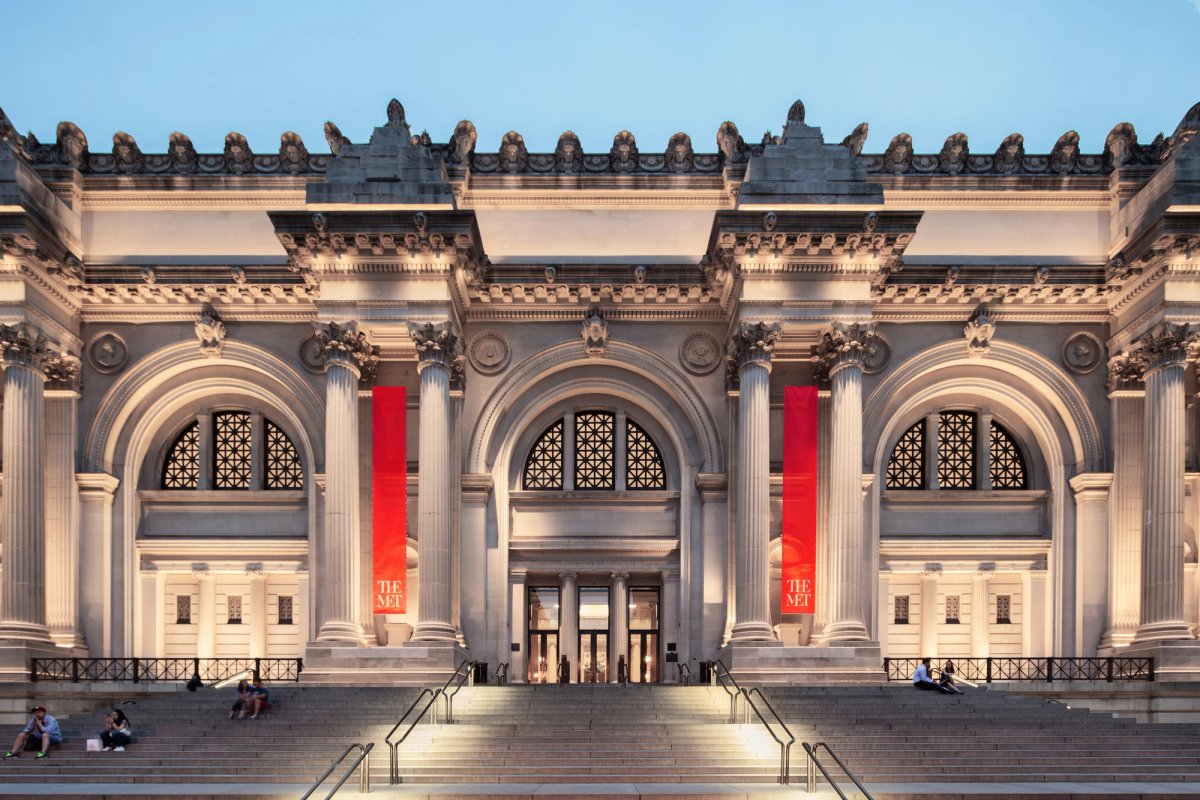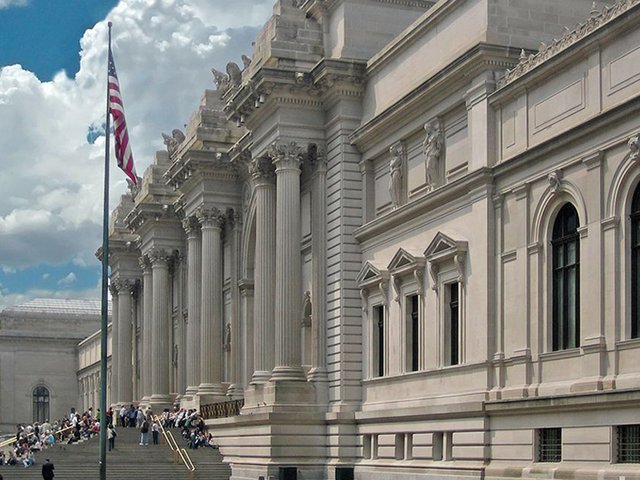In what it describes as a milestone, the Metropolitan Museum of Art today announced the debut of its first group of undergraduate and graduate interns to be 100% paid. The museum says that the number of students applying for this round of the intern programme more than tripled from a year earlier, when just 36% of the positions included salaries.
The spring internships, which began last week and run through 23 April, provide work experience and mentorship to 28 interns whose compensation is being funded through a $5m gift from the philanthropist Adrienne Arsht. Pay for an additional nine others in the cohort is financed by other museum supporters.
Heidi Holder, chair of education at the Met, said that the number of applications for this round soared to 997 from around 300 a year earlier, no doubt because of the salary guarantee. “This allowed us to fund more diverse candidates in all the departments,” she adds. The interns are paid $15 an hour and work 14 hours per week.
The Met says the positions span 40 departmental areas, among them administration, curatorial responsibilities, conservation and education. Art historical concentrations range from ancient Near Eastern to Egyptian, Greek and Roman, Asian, Islamic, medieval, American and Modern and contemporary art as well as European paintings and arms and armour.
Most of the interns attend or recently graduated from prestigious colleges and universities, but Holder says they come from a range of backgrounds “The word diversity is used a lot, but they’re diverse in every way,” she says, including intellectual and career interests. One goal for the interns is “being interested in the equity we’re trying to promote,” she explains, and “being ambassadors for that and taking that forward into their own careers.”
Although the Met has been open at a limited capacity since late last August after a five-month shutdown, concerns about the coronavirus pandemic have prompted the museum to allow the interns to work remotely.
In interviews, three education interns talked about their motivations for applying and what they hoped to gain from their stints at the museum. Kaelin Keller, a recent graduate of Spelman College in Atlanta with an abiding interest in education who has had internships at the LSU Museum of Art in Baton Rouge, Louisiana, the Art Institute of Chicago and the Studio Museum in Harlem, says she wants to pursue a career in the arts and has a special interest in aiding disadvantaged young people.
“I wanted to learn more about the Met as a place for art education and for communities to come in and learn,” says Keller, 22, who is working from home in Baton Rouge. She was also struck by the fact that black museum leaders like Sandra Jackson-Dumont, the Met’s former head of education, and the curator Lowery Stokes Sims had prominent roles there.
When asked, Keller said the guarantee of payment made a difference. “I think unpaid internships are very much a thing of the past,” she adds. “It’s kind of frowned upon in most conversations I’m in.”
Keller hopes the internship will hone her research skills and enhance her goal of understanding where “arts and community intersect”. One of her Met projects, she says, is conducting research on creating an interactive art space for young people in the Nolen Library in the museum’s Ruth and Harold D. Uris Center for Education.
Noah Caspar, 21, an art student senior at the University of Michigan who is working from home in Chappaqua, New York, has dived into educational workshops for the museum, which are all currently being conducted online because of Covid-19 restrictions. The intern describes an upbringing in which art was a continual inspiration, from the Met’s “Learning to Look” programme, which they experienced as a child, to their grandmother’s influence as a museum docent at the Solomon R. Guggenheim Museum and the Jewish Museum. Caspar also tutored throughout high school, which bolstered an interest in motivating others.
As part of the internship, Caspar has already taken part in a Met Teen Studio session in which middle and high school students had the opportunity to weave and draw and a Saturday Sketching exercise on Instagram Live in which students shared their renderings of a zodiac figure. (Among Caspar’s artistic talents are sculpture, fiber art and installation art.)
“I would really love to be a fine artist and work in a museum space” someday, Caspar says, “because museums are not for profit and it’s very different from the gallery model.”
Miguel Alonso Moya, 22, a Columbia University senior from El Paso, Texas, who is working remotely from Manhattan’s Upper West Side, says his internship gives him an exceptional opportunity to connect with a vast range of staff members in different Met departments as well as interns with backgrounds in art history and anthropology.
His charge at the Met, he says, is to work with the museum’s high school interns and help them develop professionally. Following the internship, he plans to work for the classroom initiative Teach for America in Miami for two years and then apply to graduate school.
In the longer term, he wants to be involved with the arts, either through policy in the public sector or finance in the private sector.
While he doesn’t plan a full-time museum career, Moya says, “I wanted to be in a space where I could derive meaning from art”—while gleaning insights about how to incorporate that in the classroom while working for Teach for America.
As for the Met salary, he says, “my main goal for the spring was getting a paid job. I’m a low-income student and find it necessary to have a source of income.”
The Met says applications for its paid summer internships are meanwhile up 60% from last year. They will include full-time and part-time positions and include a travel stipend for those granted full-time positions.
Arsht’s $5m gift, which also funds the museum’s MetLiveArts series of performance commissions, is expected to underwrite internships for five years, the museum says.
The philanthropist, who is known for her contributions to the arts in Miami and Washington, DC as well as New York, says the surge in Met applications attests to the reality that salaried internships “are an important step in advancing one’s career”. Arsht said in a statement that: “paid internships create a more level playing field, allowing more opportunities and enabling greater inclusivity for all”.




